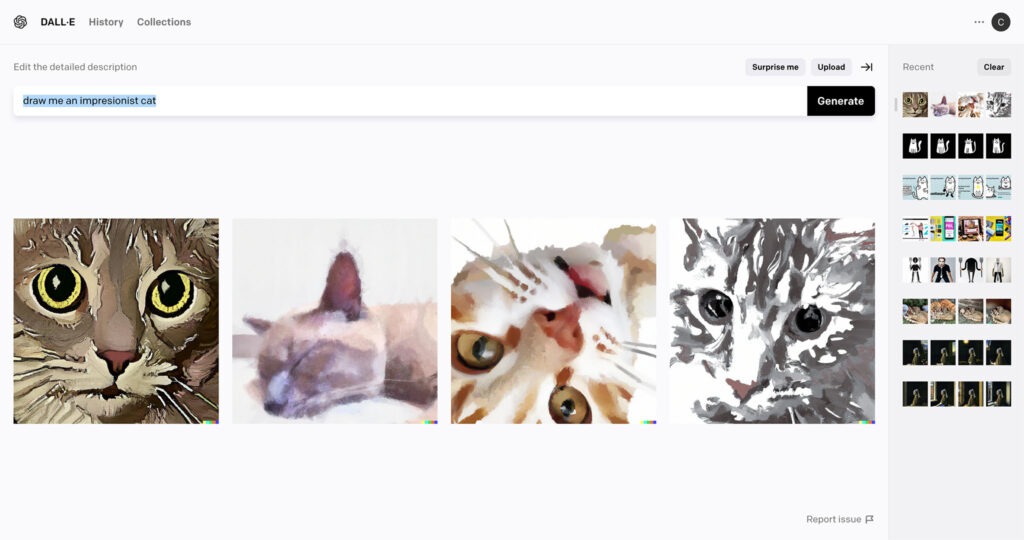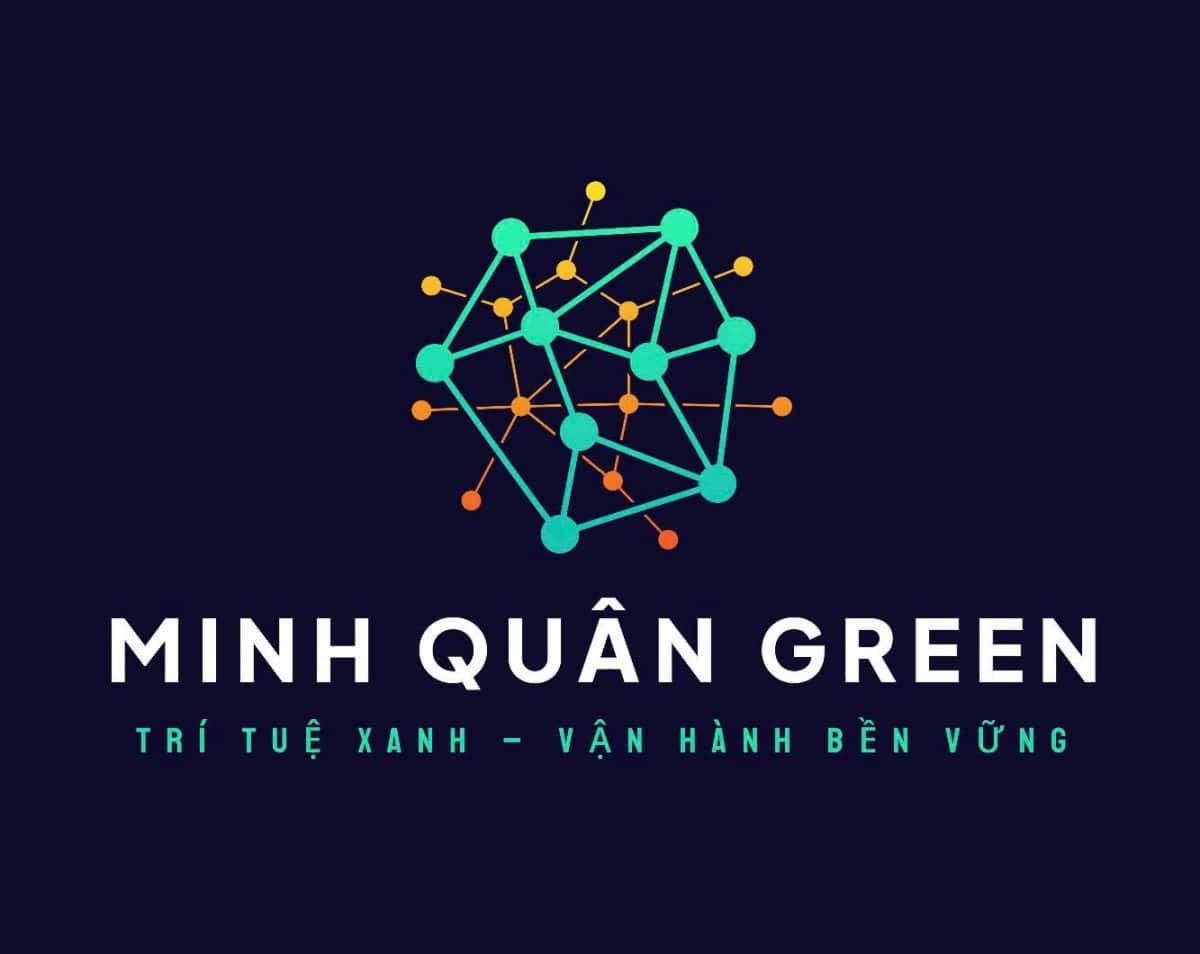Dall-E is an artificial intelligence (AI) program that creates images based on text prompts. This means all you need to generate high-quality images through AI is to provide Dall-E with clear instructions in natural language.
At the time of writing, the AI-based tool operates under Dall-E 2, which is the latest version of the program. Dall-E 2 is available on the market through the developer OpenAI, offering the program via a web interface as well as an application programming interface (API).
To understand what Dall-E is and how it works, here’s a quick guide to this modern image generation program.
Key Points
- Dall-E is an AI-based image generation tool that creates images through text instructions.
- Dall-E uses deep learning to combine text prompts and visual signals, turning related visual documents into coherent images.
- Dall-E also provides an image editor to enhance existing images through AI-based editing capabilities.
- Dall-E is available in both graphical user interface (GUI) and API forms.
- You retain full ownership of any images you create through Dall-E.
How do you generate AI images through text?

Dall-E is an image generation tool that operates through AI to synthesize text instructions and transform them into original images. To achieve this feat, Dall-E employs deep learning methods to comprehend a rich set of images and references.
Upon receiving a text prompt, Dall-E utilizes training from these datasets to generate images that match the provided instructions. This enables users to utilize AI to create images without needing extensive technical guidance or coding.
This functionality is one of the many reasons Dall-E has become popular since its launch in 2020. In its latest version, Dall-E 2, the program also offers additional capabilities. These include the option to edit existing images by adding new visual elements or the ability to expand the canvas by generating related images for the original image.
To use Dall-E 2, you can access the OpenAI website and use the tool through a web-based GUI. Even if you have never used AI programs before, the simple interface makes it easy to input text prompts and receive the desired images in return.
The editing interface, launched in late 2022, operates with the same straightforward approach. With an easy-to-use eraser tool, you can remove parts of the image that you wish to edit or enhance with Dall-E. From there, you can add text prompts to incorporate new elements into your images.
You can also use the “Generation Frame” tool to extend the canvas and size of an existing image. You can add this generation frame to the top, bottom, or sides. You can also adjust the size of this frame. Once you have settled the generation frame and provided prompts to Dall-E, you can see your image expand to the desired size while still fitting in with the rest of the image, subject, and artistic style.

This quick introduction allows you to understand what Dall-E is and how it operates. But if you have further questions about how this tool works exactly, you can continue to explore the mechanisms behind it.
Dall-E uses various AI-based techniques to enhance its visual prowess
While Dall-E is extremely adept at identifying images and replicating their styles, this proficiency is not innate. Instead, Dall-E AI has been trained using a neural network that combines visual references with natural language supervision.
This neural network employs deep learning, a subset of AI that processes large datasets to learn about current subjects. With it, deep learning through neural networks can also classify different patterns and identify relationships between various data segments.
The neural network used to train Dall-E is called CLIP (Contrastive Language-Image Pre-training). CLIP uses a zero-shot learning (ZSL) setup, allowing it to evaluate image samples and text references even if it has never encountered them before. This is made possible through the extensive datasets that CLIP has been trained to match one set of information with the other.
To learn about these visual and textual references, Dall-E has been trained on no less than 12 billion parameters. These parameters label different images with a text reference and enable Dall-E to understand what is expected from it when users request a specific image creation. In addition to allowing the generation of images for simple concepts, this capability also shines in abstract concepts, such as drawing human-shaped characters from inanimate objects.
This is where Dall-E’s AI model closely aligns with another product from the developer OpenAI. This match occurs in the form of Generative Pre-trained Transformer 3 (GPT-3). While GPT-3 generates text by predicting the next word to appear in the text it is creating, Dall-E generates images by determining how it will create a complete image based on the elements it generates in a sequence.
Once you understand what Dall-E is, you can see how this approach works wonders in creating high-quality images from scratch. With it, it also clarifies how the program generates extended images and edits existing images.
By utilizing impressive parameter choices, a purposefully designed neural network, and an intuitive GUI, Dall-E makes it easy for users to benefit from rapidly evolving generative AI technology to produce images.
Dall-E Review: How much does Dall-E cost?
Credits are available through the developer OpenAI, which provides credits in exchange for a set price. Each credit is equivalent to a unique image generation request.
This means you will use a single credit to create images from text prompts, edit existing images for modifications, or extend the canvas for existing images. Each image generation request also provides you with four variants. But if you request more variants, you will have to pay one credit for each request.
At the time of writing, Dall-E is available at a rate of 115 credits for $15. The credits you purchase will expire within 12 months. You can use these credits through the web interface or via the Dall-E API.
Overall, Dall-E’s pricing package is more expensive than its closest competitors, Midjourney and Stable Diffusion. At the time of writing, Midjourney’s pricing starts at $10 for 200 image generation requests. It also offers a $30 package for unlimited user generation requests. Meanwhile, Stable Diffusion charges $100 for 100 image credits.
However, because Dall-E’s AI has been trained more intensively and offers image expansion tools that Midjourney and Stable Diffusion lack, it has ample justification for pricing its product higher. Additionally, Midjourney requires you to access the program through Discord. In contrast, Dall-E is available through its own web GUI as well as its own API.
After learning what Dall-E is and what fees it entails, you will easily determine whether you should pay for its services. While doing so, you can still sign up for the solution and receive 50 free credits right away. After that, you can receive 15 free credits each month. However, these free credits will expire within one month instead of the extended expiration date of one year for paid credits.
Pros and Cons of Dall-E
Dall-E 2, launched in 2022, is more capable than its predecessor. By using images and references from its neural network, the program can frequently generate impressive images that align with your prompts. Additionally, its API features and intuitive GUI make it easier for you to generate images without needing to use complex image editing tools.
That said, Dall-E is still in its early stages, where you cannot expect perfection in every image it creates. While the program does its best to fill in the proverbial gaps or literal meanings through the images it generates, it still has limitations due to only being as good as the data it is trained on.
For example, if you provide Dall-E with a prompt it has never encountered in its neural network, it will generate the closest possible image to your prompt. This image may or may not fit your natural language instructions. For instance, think of providing the program with a prompt to create “a swan lake on stage.” It is likely to refer to the famous ballet or a lake in the literal sense with swans placed on stage.
When creating realistic images, you may also notice issues occurring with the description of faces, hands, feet, and other anatomical details. Sometimes, the AI produces features that do not quite have the accuracy of representation or realism. But this is also
